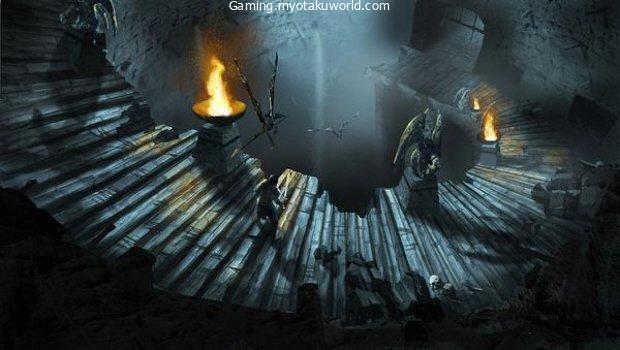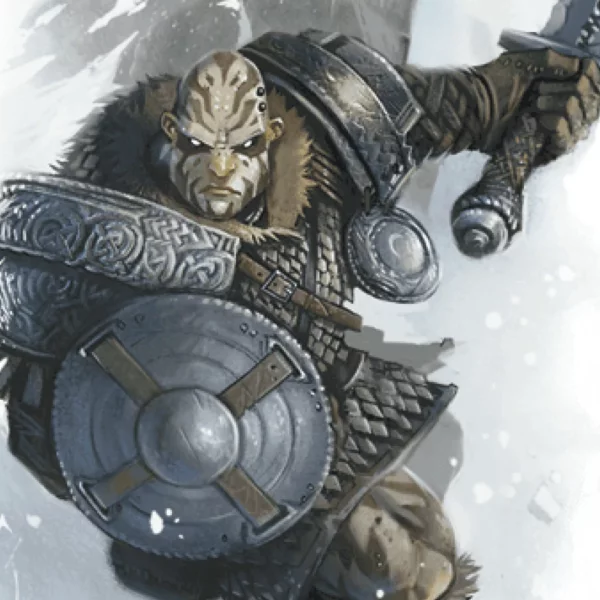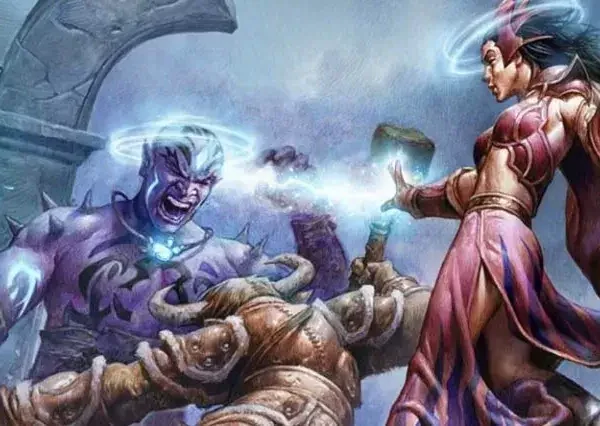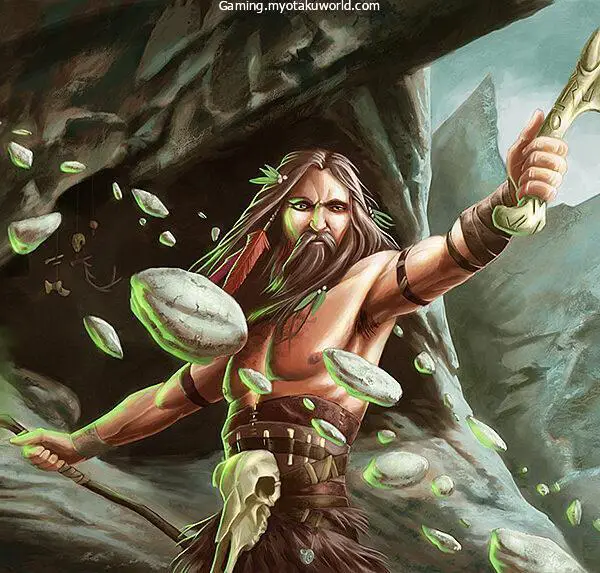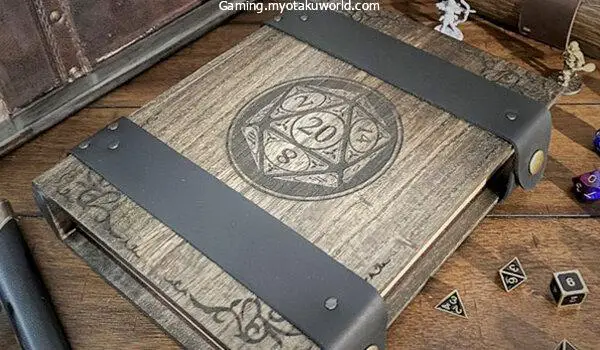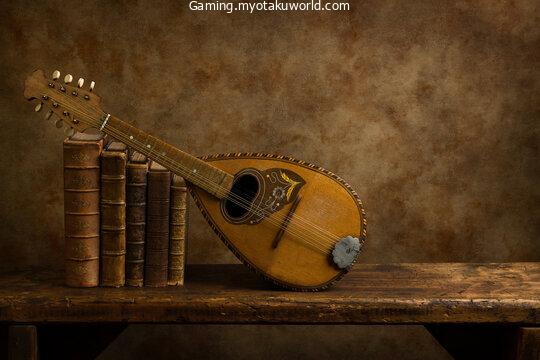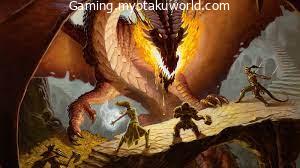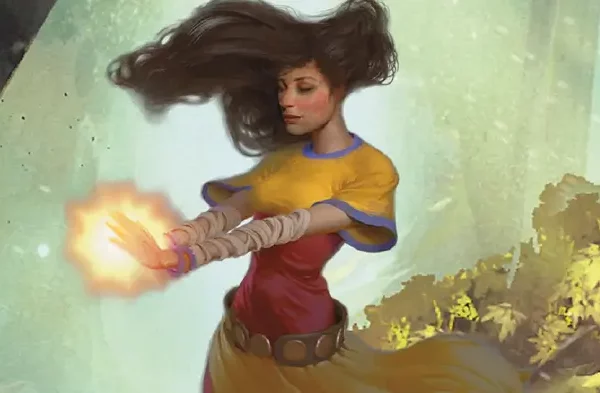In Dungeons & Dragons 5th Edition, Dark vision is often meant to be some kind of problem that the players have to solve.
But a lot of player characters and monsters have Dark vision, which lets them see better in dark places.
But in 5e, what is Dark vision?
How does it work?
How does it change the way you play?
This article tells you everything you need to know about Dark vision and how it works in your D&D 5e game.
Before we get too far into 5e’s Dark vision rules, we need to talk about what it is and how it works with D&D’s Vision and Light rules.
What is Dark vision in 5e?
Dark vision is a set of rules in D&D 5e that lets creatures see in dimly lit or dark places.
It raises the light level by one for creatures with Dark vision in a certain area.
So, total darkness turns into dim light, and dim light turns into bright light.
Dark vision in 5e lets creatures see in the dark based on how much light there is.
Now, in order to fully understand how Dark vision works in 5e, we need to know the rules for Vision and Light.
From the Player’s Handbook, page 183:

- A given area might be lightly or heavily obscured.
- In a lightly obscured area, such as dim light, patchy fog, or moderate foliage, creatures have a disadvantage on Wisdom (Perception) checks that rely on sight.
- A heavily obscured area–such as darkness, opaque fog, or dense foliage–blocks vision entirely.
- A creature effectively suffers from the blinded condition when trying to see something in that area.
- The presence or absence of light in an environment creates three categories of illumination: bright light, dim light, and darkness.
- Bright light lets most creatures see normally.
- Even gloomy days provide bright light, as do torches, lanterns, fires, and other sources of illumination within a specific radius.
- Dim light, also called shadows, creates a lightly obscured area.
- An area of dim light is usually a boundary between a source of bright light, such as a torch, and surrounding darkness.
- The soft light of twilight and dawn also counts as dim light.
- A particularly brilliant full moon might bathe the land in dim light.
- Darkness creates a heavily obscured area.
- Characters face darkness outdoors at night (even on most moonlit nights), within the confines of an unlit dungeon or a subterranean vault, or in an area of magical darkness.
Most creatures can see just fine in bright light, but the Drow is an exception.
Dim light makes a slightly cloudy area and makes Wisdom (Perception) checks harder.
And darkness makes a place where it’s hard to see, so a creature can’t see and is blinded.
From there, let’s talk about how Dark vision changes the rules.
The same information from the PHB:
Many creatures in fantasy gaming worlds, especially those that dwell underground, have dark vision. Within a specified range, a creature with dark vision can see in darkness as if the darkness were dim light, so areas of darkness are only lightly obscured as far as that creature is concerned. However, the creature can’t discern color in darkness, only shades of gray.
This rule doesn’t mention that creatures with Darkvision also see dim light as a bright light when they see it.
But the Monster Manual tells you how to do this on page 9.
A monster with dark vision can see in the dark within a specific radius. The monster can see in dim light within the radius as if it were bright light, and in darkness as if it were dim light. The monster can’t discern color in darkness, only shades of gray. Many creatures that live underground have this special sense.
So, a creature with Darkvision can see just as well in dim light as it can in darkness.
Each creature that can see in the dark has a certain range (usually 60 feet for character races with a few exceptions).
After that, they follow the normal rules for dimly lit and dark areas.
Superior Dark vision
Superior Dark vision is almost the same as Dark vision, but it works over a wider area.
Some playable races and monsters have this improved version of Dark vision, which lets them see a bigger area at night.
That’s all the trait Superior Dark vision does.
It works the same way as other ways to see in dim light and darkness, but it has a wider range.
From what we know about the Deep Gnome from the rules:
Your dark vision has a radius of 120 feet.
Superior Dark vision and Sunlight Sensitivity are traits of some creatures, like the drow.
It’s important to know that Superior Dark vision doesn’t make it hard to see in direct sunlight.
Sunlight Sensitivity does that.
You should also remember that Superior Darkvision doesn’t give a creature the ability to see through magical darkness on its own.
It’s the same as Dark vision, but the area it affects is bigger.
Character Races with Superior Darkvision
- Dwarf – Grey Dwarf (Duergar) subrace
- Elf – Dark Elf (Drow) subrace
- Gnome – Deep Gnome (Svirfneblin) subrace
How Dark vision Affects Game play?

Dark vision changes how you play because it makes it easier to fight in places that are dimly lit or completely dark.
Not to say that it makes them less important, but creatures that can see in the dark won’t have some disadvantages in battle or when exploring.
Some Game Masters have been worried that Dark vision will ruin their game.
It makes dark places less scary, which is why “I have Dark vision” has become something of a community meme.
But Darkvision doesn’t change many parts of the game by itself.
Yes, it makes it easy for many player characters to see in the dark, but all it really means is that some puzzles and encounters will need to be changed just a little bit to account for it.
That doesn’t mean you shouldn’t give player characters with Dark vision chances to shine.
It is a unique trait, even if it isn’t that uncommon, and players should have chances to use it.
All of this means that Dark vision mostly affects combat and exploration, which are two of the three pillars of play.
Combat
If a fight happens in a dark area, having a dark vision is a big help.
Fighting in dim light has no effect on attack rolls, and a creature with Dark vision can see in total darkness as if it were dim light.
This means that a creature with Dark vision can fight normally even when there is no light at all.
So, what’s it all about?
Well, it doesn’t really matter if you’re fighting in a bright or dark area.
Most animals can see well in places where there is a lot of light.
Dimly lit places only make it harder to make Wisdom (Perception) checks.
They don’t make it harder to attack or save.
Now, Darkvision is much more important when you’re fighting in total darkness.
Creatures without Dark vision can’t see when it’s dark, so they have a disadvantage when they try to attack and an advantage when they are attacked.
But creatures with Dark vision that are fighting in the dark can see right through it as if it were dimly lit, so they aren’t really blinded.
For example, a human Fighter fights a goblin one-on-one in a cave with no light.
The Fighter can’t see in the dark because they don’t have Dark vision.
This makes their attacks against the goblin less effective.
On the other hand, goblin attacks wouldn’t be at a disadvantage because goblins have Dark vision, which lets them see the Fighter as if it were dark.
So, Dark vision is important when fighting in the dark, but it isn’t very useful when it’s not completely dark.
Exploration
Most of the time, darkness affects exploration more than combat.
Even a little light makes it harder to see what’s going on.
Dark vision helps when exploring because it lets a creature see in dark and dim places, which makes it easier to see what’s going on there.
There are times when dark vision is useful in combat, but it is much more useful when exploring.
A creature with Dark vision can see in total darkness as if it were dimly lit.
But a creature with Dark vision has a disadvantage on Wisdom (Perception) checks even in dim light.
So, if these creatures only use their eyes, it is even harder for them to keep an eye on an area.
Also, creatures with Dark vision can’t see colors when it’s dark; they can only see different shades of grey.
So, if they need to pull the red level, find the green book, follow a specific color pattern on the floor, or set off a deadly trap, they can’t do any of those things without a light source.
Is Darkvision Good?

The ability to see in the dark is pretty good for both player characters and creatures used by the Game Master.
It is especially useful for getting around in dark caves, dungeons, and other places where there isn’t much light.
And if an enemy creature doesn’t have Dark vision, it helps both player characters and monsters a lot.
In short, yes, Dark vision is a good game.
It’s a useful trait for any player character or creature controlled by the GM because it makes it easier to move around in the world.
That doesn’t mean it’s too strong, though.
Yes, Dark vision makes meetings in dark places of the world a little less important.
But it can’t see through physical things like thick underbrush, and it still makes Wisdom (Perception) checks harder.
Also, the range of Dark vision is limited for every creature.
Some creatures have a larger range, so they can still use darkness to sneak up on player characters who aren’t paying attention.
What Character Races Have Darkvision?
Darkvision is a trait of many of the races in D&D 5e.
The range is different for each one, but the standard is 60 feet.
Darkvision is a trait of a lot of character races in 5e, which makes it easy for players to make characters with it.
Darkvision is a trait of 20 of the 46 playable races and lineages (not counting subraces), so it’s a little less than half.
List of 5e races that can see in the dark
- Dwarf & its subraces (PHB)
- Elf & its subraces (PHB)
- Gnome & is subraces (PHB)
- Half-Elf (PHB)
- Half-Orc (PHB)
- Tiefling (PHB)
- Orc (VGtM, EGtW, E:RftLW)
- Leonin (MOoT)
- Dhampir lineage (VRGtR)
- Hexblood lineage (VRGtR)
- Owlin (SACoC)
- Genasi (Fire subrace only) (EE)
- Aasimar (VGtM)
- Bugbear (VGtM)
- Goblin (VGtM)
- Hobgoblin (VGtM)
- Kobold (VGtM)
- Tabaxi (VGtM)
- Triton (VGtM)
- Yuan-ti Pureblood (VGtM)
- Shifter (E:RftLW)
- Simic Hybrid (GGtR)
- Vedalken (GGtR)
How to Get Dark vision in 5e?
The easiest way to get Dark vision in D&D 5e is to play a race or lineage that already has it.
However, there are a few other ways for a player character to be able to see in the dark.
Now, you have a few ways to give your character the ability to see in the dark besides making them a member of a race or family that has the Dark vision trait.
Some classes or sub classes give character a feature that lets them see in the dark.
You can get the dark vision spell pretty easily, but you have to play the right class or play with someone who does.
Lastly, D&D 5e has some magic items that let you see in the dark when you use them.
Class Features
A few class traits give characters the ability to see in the dark.
Even though there aren’t many of them, most of them let you see in the dark permanently once you reach the level requirement.
These classes either give you basic Dark vision, a more powerful version of it, or the ability to see through magical darkness.
Now, not all of them do this, and some of them need to be activated by taking an action or spending resources, but they all give player characters some ability to see in the dark.
Class & Subclass Features Which Grant Darkvision
- Devil’s Sight Eldritch Invocation – Warlock (PHB)
- Umbral Sight – Ranger: Gloom Stalker (XGtE)
- Eyes of the Dark – Sorcerer: Shadow Origin (XGtE)
- Ghostly Gaze Eldritch Invocation – Warlock (XGtE)
- Eyes of Night – Cleric: Twilight Domain (TCoE)
I’d like to talk about the Eldritch Invocation of the Warlock.
Devil’s Sight is the only version of Dark vision that lets a character see through all magical darkness.
If a Shadow Sorcerer spends Sorcery Points on Eyes of the Dark, they can see through their own darkness spells, but not all magical darkness.
In these specific edge cases, Devil’s Sight is great.
The Dark vision Spell
In D&D 5e, there is a spell called “dark vision” that lets a creature see in the dark.
This spell lets a creature see in the dark up to 60 feet away for 8 hours.
There’s a spell you can use to give Dark vision to another creature, like the poor Human Fighter in your group.
Dark vision was chosen as the name because having a spell with the same name isn’t that confusing.
- Level: 2nd
- Casting Time: 1 Action
- Range: Touch on one willing creature
- Components: V, S, M
- Material Components: a pinch of dried carrot or an agate
- Duration: 8 Hours
- School: Transmutation
- Save: None
You touch a willing creature to grant it the ability to see in the dark. For the duration, that creature has dark vision out to a range of 60 feet.
The dark vision spell is great because it doesn’t require concentration.
This means that a spell caster can use it on as many creatures as they have spell slots for and still cast other spells without having to worry about it for most of the day.
It is a 2nd-level spell that uses up a lot of resources, especially when used early on.
But it makes it less likely that the party will need light if they need to be quiet.
Even so, not every 5e class that can cast spells can use the dark vision spell.
Classes Which Can Cast Dark vision
- Artificer
- Druid
- Ranger
- Sorcerer
- Wizard
Magic Items
Some magic items in 5e give creatures the ability to see in the dark if they use them or get used to them.
There may be more benefits to these magical items than just Dark vision.
Only a few items in D&D 5e can help a creature see in the dark.
Even then, they are in many different books, which makes it hard to find them all.
Some of these magical items also need to be attuned, which takes up one of a character’s three slots.
In the Basic Rules, there are three magic items that have the ability to see in the dark.
This makes it easy for Game Masters to add them to their games.
List of Magic Items Which Grant Darkvision
- Belt of Dwarvenkind (Basic Rules)
- Goggle of Night (Basic Rules)
- Robe of Eyes (Basic Rules)
- Axe of the Dwarvish Lords (DMG)
- Dragon Mask (ToD)
- Helm of Underwater Action (GoS)
- Shadowfell Brand Tattoo (TCoE)
- Wreath of the Prism (EGtW)
- Verminshroud (EGtW)
- Silken Spite (EGtW)
- Orb of the Veil (EGtW)
How to Counter Dark vision?
In 5e, it’s not too hard to fight Dark vision.
Most uses of Dark vision only work in natural darkness.
This means that creatures with this trait or feature don’t get any benefit from spells like darkness or areas where magic makes it dark.
Also, creatures with Dark vision can’t see colors, so color-based puzzles are still a unique challenge.
I’ve seen a lot of Game Masters complain that Dark vision makes their games less dangerous.
Too many races and lines of characters can see in the dark, making nighttime ambushes less dangerous.
But it’s not too hard to get around a group of player characters when you have Dark vision.
First of all, Dark vision alone can’t see through darkness made by magic.
If an enemy spell caster casts darkness on the party, it pretty much evens out the fight in the area because any advantages or disadvantages cancel each other out.
On the other hand, a place is cursed or ruined and gives off supernatural darkness.
So, a group of assassins with two levels in Warlock, the Devil’s Sight Eldritch Invocation, and the darkness spell is a very dangerous encounter for low-level adventurers.
In the same way, it’s much harder to move around in space or figure out a puzzle when no one can see what they’re doing.
You could also use puzzles or signs based on colors in your adventures.
Things that have Dark vision can’t see colors when it’s dark.
So, if the player characters need to sneak into a restricted area and get an item of a certain color (a purple-bound book, a jade ring, a blue cat, etc.), they must decide whether to give up stealth for the accuracy or find another way to find the object.
Or, you can use color to make traps less likely to work.
Lastly, if you want to make Dark vision hard for your players, don’t just use light levels.
Depending on how thick it is, a morning fog makes it hard to see just like a dimly lit or dark area.
The same is true for a forest or swamp with a lot of plants.
Or, if you want an ambush, think about making the enemies invisible in some way.
Even if the players’ characters have Darkvision, the Game Masters have all the tools they need to make things hard for them.
I will say that you shouldn’t always try to get around the player characters’ Dark vision.
This is too bad, and players may eventually feel like their character might as well not have Dark vision at all.
So, think about how you might do this.
FAQs
Does Darkvision Work in Total Darkness?
Yes, Darkvision in 5e works in complete or near-total darkness. If the darkness isn’t made by magic, creatures with Dark vision can see in total darkness as if it were dim light. In 5e, the rules for Dark vision make it clear that creatures with it can see in the dark as if there were dim light. Now, if the darkness is caused by magic, a creature with Darkvision won’t be able to see through it.
Can You Read with Dark vision?
Yes, Dark vision still lets creatures read. This is assuming that the writing has enough contrast since colors of the same shade can blend into similar shades of grey, making it hard to read. Even if they can’t see in the dark, creatures with Dark vision can still read if they are able to. A creature with Dark vision can only see shades of grey in the dark, so the color of the writing and what it’s written on do matter. If the colors of the writing and the surface are similar, it may be harder to read them because they look like similar shades of grey.
Can the Dark vision Spell See Through Magical Darkness?
No, the dark vision spell does not let a creature see through magical darkness like that caused by the darkness spell. Just like that. There is nothing in the description of the dark vision spell that says a creature who has it can see through magical darkness.
Can Superior Dark vision See Through the Darkness Spell?
No, creatures with Superior Dark vision can’t see through the darkness spell because it doesn’t give them the ability to see through magical darkness. All that Superior Dark vision does is make the normal Dark vision range bigger. It doesn’t help you see through magical darkness in any other way.
Is There a Way to See Through Magical Darkness in 5e?
You can only see through magical darkness with Devil’s Sight. Regular Dark vision and Superior Dark vision can’t see through magic-made darkness. As was already said, the only way to see through magical darkness is with Devil’s Sight. Sorcerers with the Shadow Sorcerers Origin get a trait called “Eyes of the Dark.” This trait lets them cast the darkness spell and, if they spend some Sorcery Points, lets them see through only that instance of magical darkness.
Summary
In D&D 5e, that’s all you need to know about how Dark vision works.
In 5e, dark vision there is a special type of sight that lets a creature see in the dark.
Basically, a creature can see in total darkness as if it were dimly lit and in dim light as if it were brightly lit.
You can’t see through magical darkness with it, though.
Dark vision is a trait of many playable races and lineages, and there are a few other ways to get it (class features, the dark vision spell, and magic items).
